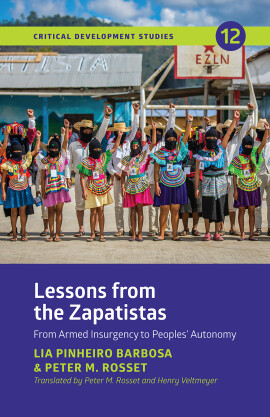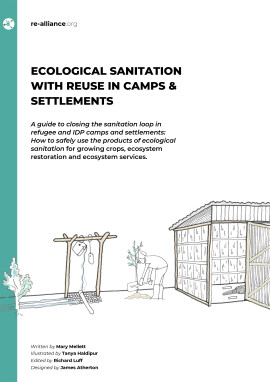
Sustaining and Scaling Up Community Managed Water
WASEP in Pakistan
Jeff Tan, Stephen M. Lyon, Attaullah Shah
Community-based water management (CBWM) remains the leading model for implementing and sustaining rural water supply services in low- and middle-income countries despite the lack of sustainability. Moreover, measures centred on providing external support to communities directly and through a wider policy and institutional framework have not improved sustainability. This book examines the key features, performance and limitations of the CBWM model through the case study of the Water and Sanitation Extension Programme (WASEP), a successful community-managed scheme that has delivered clean piped drinking water to over 450 mainly rural settlements in Gilgit-Baltistan, Northern Pakistan.
This case study draws on the findings of a 2019–2022 research project to assess the sustainability of WASEP and its scalability to urban centres funded by the British Academy’s Urban Infrastructures of Well-Being Programme. The research was undertaken by an inter-disciplinary team of UK- and Pakistan-based researchers from the social, engineering, and environmental sciences, along with development practitioners. Both quantitative and qualitative data were obtained through a review of WASEP schemes, a large-scale household survey, interviews, focus group discussions, and an engineering audit, based on a random sample of WASEP schemes and control sites. The chapters examine different aspects of the CBWM model and WASEP and illustrate how community participation and engineering best practices can deliver and sustain clean drinking water up to a point, and the constraints of the CBWM model on long-term sustainability that is relevant to practitioners, communities, governments and donors.
Published: 2025
Pages: 224
eBook: 9781788534208
Paperback: 9781788534185
This case study draws on the findings of a 2019–2022 research project to assess the sustainability of WASEP and its scalability to urban centres funded by the British Academy’s Urban Infrastructures of Well-Being Programme. The research was undertaken by an inter-disciplinary team of UK- and Pakistan-based researchers from the social, engineering, and environmental sciences, along with development practitioners. Both quantitative and qualitative data were obtained through a review of WASEP schemes, a large-scale household survey, interviews, focus group discussions, and an engineering audit, based on a random sample of WASEP schemes and control sites. The chapters examine different aspects of the CBWM model and WASEP and illustrate how community participation and engineering best practices can deliver and sustain clean drinking water up to a point, and the constraints of the CBWM model on long-term sustainability that is relevant to practitioners, communities, governments and donors.
| 1. Introduction: Why community water management? | |||
|---|---|---|---|
| Jeff Tan | |||
| 2. Background: Gilgit-Baltistan, WASEP, and the research | |||
| Jeff Tan, Anna Grieser, Matt Birkinshaw | |||
| 3. Water governance and related institutions in Gilgit-Baltistan | |||
| Jeff Tan, Anna Grieser | |||
| 4. The WASEP model of community management | |||
| Anna Grieser, Saleem Khan, Jeff Tan | |||
| 5. Community participation in WASEP | |||
| Jeff Tan, Anna Grieser, Matt Birkinshaw, Sealeem Uddin, Fatima Islam | |||
| 6. Women’'s participation and WASEP | |||
| Anna Grieser, Jeff Tan, Matt Birkinshaw, Saleem Uddin, Yasmin Ansa, Karamat Ali | |||
| 7. Water-related conflict and conflict management in WASEP | |||
| Jeff Tan, Anna Grieser, Matt Birkinshaw, Stephen Lyon, Saleem Uddin | |||
| 8. How financially sustainable is WASEP? | |||
| Jeff Tan, Sabrinisso Valdosh, Saleem Uddin | |||
| 9. WASEP water infrastructure and water quality | |||
| Attaullah Shah, Manzoor Ali, Jeff Tan, Mushtaque Ahmed | |||
| 10. Natural hazards: WASEP engineering solutions and community responses | |||
| Karamat Ali, Jeff Tan, Manzoor Ali | |||
| 11. WASEP: How sustainable and scalable is WASEP? | |||
| Jeff Tan |
'Although the design, construction and initial capital investment of new water supply schemes pose some challenges, these are trivial compared to the subsequent issues around management, financing and sustainability of the services this infrastructure provides.
These post-construction issues are rightly receiving much attention in water sector debates and dialogues at the present time. Questions are being asked about the viability of alternative management arrangements, about the affordability of high levels of service to both water users and the State, and consequently about how sustainable water supply services can be achieved.
This is therefore an important book. It addresses these questions in a focused and in-depth manner, in relation to a single but extensive programme in a single country. The studies and investigations on which it is based are thorough and rigorous, and the arguments in the book are set out clearly for consideration by rural water specialists beyond the programme and country which are its focus.
If you are struggling with the issues just mentioned – that are covered in far greater depth in this book – I do urge you to read it, reflect on the lessons drawn by the authors, debate them, contextualise them and apply them in your work.'
Professor Richard Carter, Water sector specialist and consultant





